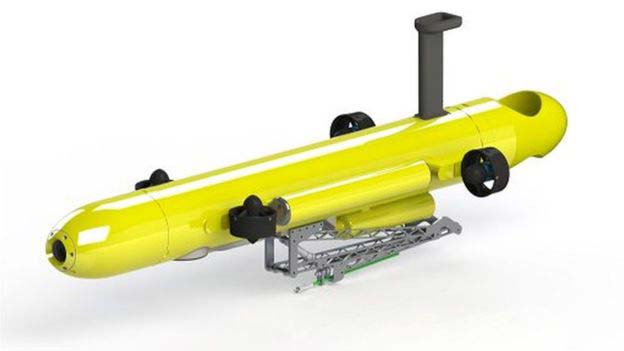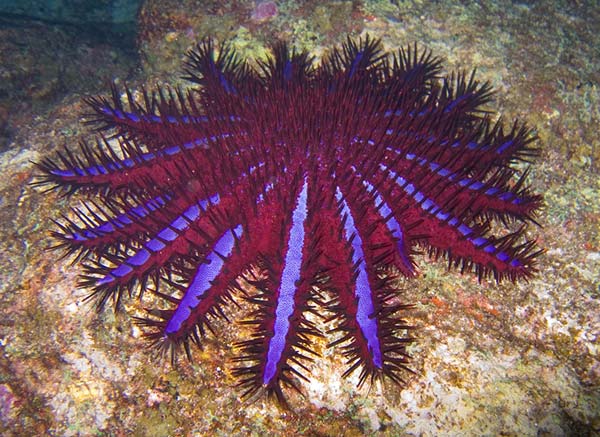The crown-of-thorns sea star (Acanthaster planci) is a large, multiple-armed starfish that loves to eat hard coral polyps, killing tropical reefs in the process. It receives its name from venomous thorn-like spines that cover its upper surface, or the crown of thorns, and is one of the largest sea stars in the world. An individual starfish can consume up to 65 sq. ft. of living coral reef per year, and when crown-of-thorns starfish invade a reef in numbers, the results are devastating.
Crown of thorn starfish are also notorious for their massive population explosions. They eat vast amounts of live coral, changing the very character of the reef, promoting seaweed growth, changing fish populations and creating cascades of changes. On healthy coral reefs, the coral-eating starfish plays an important role, as it tends to feed on the fastest growing corals such as staghorns and plate corals, allowing slower growing coral species to form colonies. This helps increase coral diversity. Outbreaks, however, pose one of the most significant threats to the Great Barrier Reef.
To help combat runaway populations of the predatory starfish, engineer Matt Dunbabin has created an autonomous underwater robot, designed to hunt and kill crown of thorn starfish (COTS). He first came up with the idea a decade ago, but at that time, the only way to kill crown of thorns was to either remove them from the reef or inject them 20 times with a poison that would kill the starfish without damaging the rest of the delicate ecosystem. Then, researchers found a way to kill COTS with a single shot with a single dose of bile (digestive liquid), which kills the starfish, but not other animals in the area.
Dunbabin and Feras Dayoub, both from Australia’s Queensland University of Technology, programmed their “COTSbot” with the ability to see and distinguish COTS from other sea life. COTSbot can work for 8 hours a day and kill up to 200 starfish in a single dive. It will be tested later this month (watched over by humans to make sure it doesn’t choose innocent, fishy bystanders), and then will hopefully be released onto the Great Barrier Reef in December.
“Human divers are doing an incredible job of eradicating this starfish from targeted sites but there just aren’t enough divers to cover all the COTS hotspots across the Great Barrier Reef,” Matt Dunbabin, the creator of COTSbot said in a statement. “The COTSbot becomes a real force multiplier for the eradication process the more of them you deploy — imagine how much ground the programs could cover with a fleet of 10 or 100 COTSbots at their disposal, robots that can work day and night and in any weather condition.”
Field trials of the robot have begun in Moreton Bay in Brisbane, Australia to refine its navigation system, Queensland University of Technology researcher Matthew Dunbabin told the BBC. The COTSbot wll be taken out again to the Great Barrier Reef later this month to test it on living targets. In this trial, human researchers will assess each COTS identification by the robot prior to the robot being allowed to inject it.
The COTSbot is slated to be autonomously working on the Great Barrier Reef by December this year.
It’s an interesting concept, and as long as it doesn’t become self-aware, it should not prove to be dangerous to scuba divers. 🙂
.


